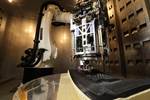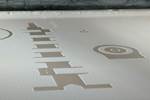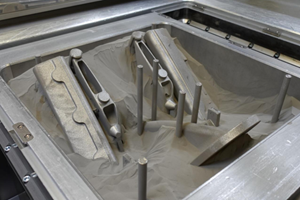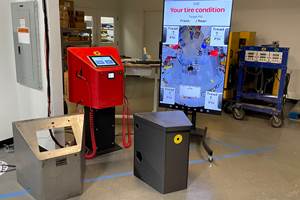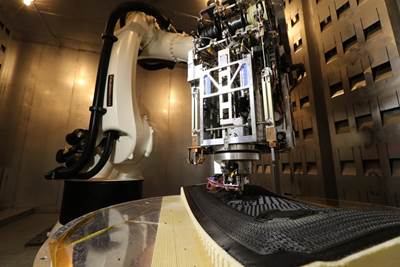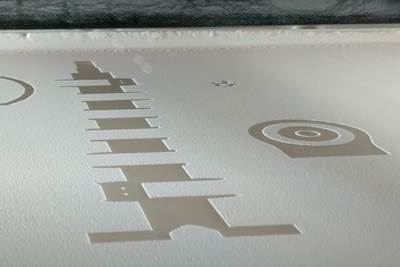Farsoon's 403P System Lowers Mann+Hummel's Prototyping Costs
Farsoon’s 403P AM system enabled Mann+Hummel to solve cycle and cost challenges stemming from recent evolutions in the Chinese automobile industry.

Mann+Hummel is a global manufacturer of high-performance filtration products across a wide range of industries. In response to the increasing competitive pressure and rapid evolution of the automotive market, Mann+Hummel Filter (Shanghai) invested in a 403P plastic laser powder bed fusion system from Farsoon Technologies.
Mann+Hummel’s three greatest challenges in the automotive sector were the demand for accelerated design-to-product cycles, cost control and customer-specific solutions for particular applications.
Automotive Market Pressures
Confronted with the market demand for faster vehicle release cycles, several passenger car manufacturers working with Mann+Hummel reduced their product development time frame from 36 months to 18 months — compressing Mann+Hummel’s time frame for product planning and development. With conventional tooling, a new functional part in filtration systems required an average of 3-4 weeks, and even designs with only 10% changes to their structure required 10 days in lead time for the next prototype iteration.
Cost control in planning, development, prototyping, testing and manufacturing processes also proved a concern with conventional manufacturing. Performing prototyping and small-batch production through conventional manufacturing required costly tools and mold fabrications for each product iteration. For one automotive filter system, the mold production cost for each part ranged between $30,000 and $150,000; this number continually grew across multiple design iterations and increasingly developed models. For some specific applications, such as filtration media, the complex micro irregular structural design proved extremely difficult and expensive to build through traditional methods.

The emerging electric vehicle market and the increasing demand for customized solutions also proved difficult for conventional tooling, as these issues forced Mann+Hummel to keep expanding various customer-specific programs besides its standard product development. Custom solutions required limited numbers of parts, and Mann+Hummel often overproduced these parts to meet the break-even point of the mold cost — leading to over-stock and warehousing issues.
3D-Printed Solutions
Since adopting Farsoon’s 403P platform in 2019, Mann+Hummel has fully integrated industrial 3D printing in both product development and direct parts production. As of March 2021, the company has produced over 5,000 functional parts for design prototypes and verification testing, with a full machine operation schedule.
“Farsoon’s industrial 3D printer has opened many possibilities for us,” says Wang Huaigu, testing & prototyping manager at Mann+Hummel Shanghai. “We are able to achieve significantly shorter product development cycles thanks to Farsoon 3D printing. It offers us a flexible internal supply chain alternative that covers our closed-loop of design-prototyping-verification-manufacturing, while its improved sustainability helps increase our profitability.”
Mann+Hummel uses an intake pipe as an example — the customer for this part required a fast design iteration for functional testing. Despite its 600-mm (23.6”) size and customized locking mechanism design, Mann+Hummel could 3D print the functional prototyping part in a single day. The company says its printed part shows excellent strength and good resistance under difficult temperature, humidity and chemical corrosion conditions. Using the 403P to produce the part significantly reduced the lead time, while also saving the money the company would have invested in tool-making.

“Thanks to the high-quality parts produced with Farsoon 403P, we are able to implement additive manufacturing in our end-use production business sector,” Huaigu says. “We can produce functional parts with complex geometries using simplified manufacturing processes and increase the structural integrity of parts by combining what would have been multiple parts into one part. The high resolution, size accuracy and optimal mechanical performance of the build parts necessitates less post-processing before delivering them to the customer. As of today, more than 30% of our selective laser sintering (SLS) parts are produced for end-use applications — and the number is still growing.”
Farsoon’s laser powder bed fusion technology also strengthens Mann+Hummel’s ability to develop and produce custom solutions. Increased production flexibility enables Mann+Hummel to use on-demand small batch manufacturing and eliminate the warehousing and tool-making costs of its custom solutions, resulting in cost savings of up to 80%.
Related Content
What Holds AM Back in Automotive Production? GM Additive Lead Describes Advances Needed
“If AM were cheaper, we would be doing more of it,” says GM’s Paul Wolcott. Various important factors relate to cost. However, the driving factor affecting cost is speed.
Read MoreIndyCar's 3D Printed Top Frame Increases Driver Safety
The IndyCar titanium top frame is a safety device standard to all the series' cars. The 3D printed titanium component holds the aeroscreen and protects drivers on the track.
Read MoreFaster Iteration, Flexible Production: How This Inflation System OEM Wins With 3D Printing
Haltec Corp., a manufacturer of tire valves and inflation systems, finds utility in 3D printing for rapid prototyping and production of components for its modular and customizable products.
Read More8 Cool Parts From Formnext 2024: The Cool Parts Show #78
End-use parts found at Formnext this year address various aspects of additive's advance, notably AM winning on cost against established processes.
Read MoreRead Next
How 3D Printing Will Change Composites Manufacturing
A Q&A with the editor-in-chief of CompositesWorld explores tooling, continuous fiber, hybrid processes, and the opportunities for smaller and more intricate composite parts.
Read MoreVideo: What is Selective Laser Sintering?
SLS is a powder-bed process for building polymer parts. How does it work and what can it do? AM talks SLS with Farsoon.
Read MoreCadillac Blackwing Models Are First GM Cars Using Additive Manufacturing for Full-Scale Production
Three functional components are 3D printed thanks to cost savings and design freedom. Layers lines on the shift knob signify this advance.
Read More

